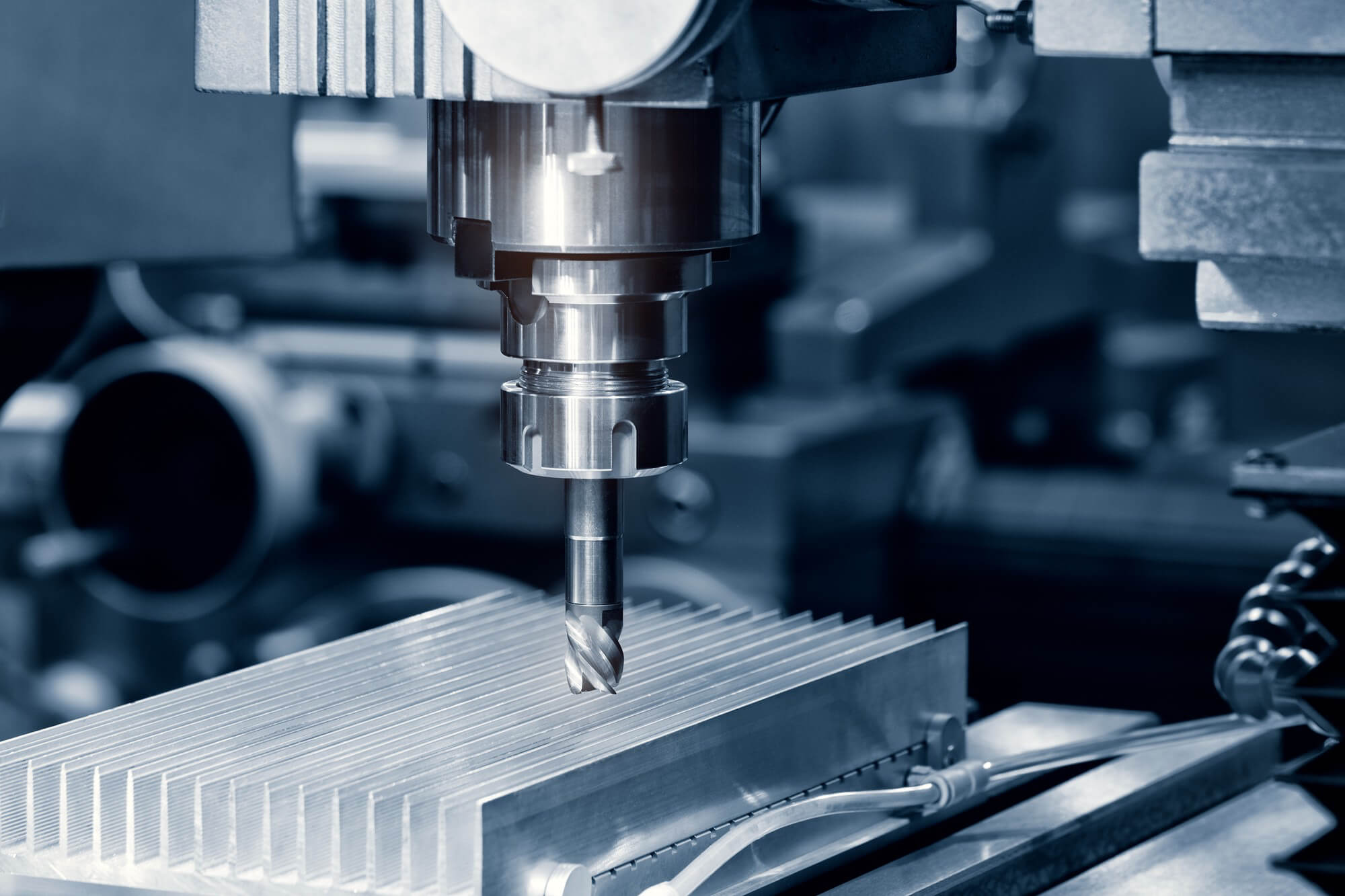High-speed machining (HSM) is an intriguing and evolving field within CNC machining. The term “high-speed” is relative and varies depending on the machining method, workpiece material, and tool material. Defining HSM is complex and lacks a universally accepted standard. However, several prominent definitions have been proposed over the years:
- In 1978, the CIRP Cutting Committee defined HSM as cutting speeds between 500 and 7000 m/min.
- For milling, HSM is defined by the balance of tools and fixtures, typically requiring spindle speeds over 8000 rpm, according to ISO 1940 standards.
- The University of Darmstadt in Germany suggested HSM involves cutting speeds 5 to 10 times higher than conventional machining.
- From a spindle design perspective, HSM is defined by a DV value (spindle bearing diameter multiplied by maximum spindle speed) of at least 2000 x 10³ mm/min.
- ANSI/ASME standards define HSM based on tool vibration frequencies, which are critical for determining cutting performance.
These definitions illustrate that HSM is not merely about cutting speed but encompasses various factors, including economic efficiency. Practical HSM involves a balance between speed and cost-effectiveness, tailored to specific materials and applications. Below is a general range of cutting speeds for different materials:
| Material | Cutting Speed Range (m/min) |
|---|---|
| Aluminum | 1500 – 7000 |
| Steel | 500 – 1500 |
| Cast Iron | 200 – 1000 |
| Stainless Steel | 200 – 500 |
| Titanium Alloys | 50 – 150 |
Advantages of High-Speed Machining
HSM offers several compelling advantages:
- Increased Material Removal Rate: With higher cutting speeds, the volume of material removed per unit time increases, reducing machining time and enhancing efficiency. This, in turn, lowers manufacturing costs.
- Reduced Cutting Forces: Higher cutting speeds lead to lower cutting forces, often reducing them by over 30%. This is particularly beneficial for machining thin-walled parts or those with less rigidity.
- Improved Heat Dissipation: The rapid expulsion of chips at high speeds carries away most of the generated heat, reducing thermal stress on the workpiece and enhancing dimensional accuracy.
- Better Surface Quality: Higher speeds help avoid low-frequency vibrations, improving surface finish and reducing the need for secondary operations like grinding or polishing.
- Machining of Hardened Materials: HSM enables the machining of materials with hardness up to HRC 65, often eliminating the need for processes like EDM (electrical discharge machining) and grinding in mold making.
Practical Implications
The practical applications of HSM are vast and impactful, particularly in industries like aerospace, automotive, and mold making. The ability to machine hardened steels directly reduces the reliance on secondary processes, streamlining production and improving overall quality. Here are a few examples:
- Aerospace: HSM is crucial for machining complex components from high-strength materials, achieving high precision and surface finish.
- Automotive: It enhances the production of engine components, gears, and other critical parts, ensuring high efficiency and consistency.
- Mold Making: Direct machining of hardened molds reduces production time and improves mold quality, leading to better product finishes.
High-speed machining represents a significant advancement in CNC machining technology, offering unparalleled efficiency, precision, and versatility. By understanding and implementing HSM techniques, manufacturers can achieve substantial improvements in productivity and product quality, paving the way for innovative and cost-effective manufacturing solutions.
Other Articles You Might Enjoy
- Optimizing CNC Machining Parts Using Constant Surface Speed Techniques
CNC machining, particularly on lathes, can be a complex process, but understanding and utilizing constant surface speed (CSS) techniques can simplify and enhance the efficiency of your operations. The key…
- The Dependable Quality Assurance in China CNC Machining
1. Introduction: Setting the Stage for Quality Excellence In this introductory section, we lay the groundwork for an exploration into the world of quality assurance in China CNC machining. We…
- Bead Blasting: The Secret to Quality CNC Machining(cnc machining tools Mavis)
The world of manufacturing has witnessed revolutionary changes with the advent of Computer Numerical Control (CNC) machining. It is a process used in the manufacturing sector that involves the use…
- Optimizing for Speed: Lightweight Materials in High-Speed CNC Machining
Introduction to CNC Machining and the Importance of Speed Optimization In the manufacturing industry, Computer Numerical Control (CNC) machining plays a crucial role. It is a process employing computerized devices…
- Material Considerations for High-Speed CNC Machining: Aluminum Alloys vs. Titanium
Introduction: High-Speed CNC Machining and Material Considerations In the world of modern manufacturing, High-Speed CNC (Computer Numerical Control) machining plays a pivotal role in producing precision parts at fast turnaround…
- Precision CNC Machining of Steel: High-Volume Production
Precision CNC Machining and High-Volume Production As an integral part of modern manufacturing processes, Precision Computer Numerical Control (CNC) machining brings about unmatched accuracy and consistency in the production of…









